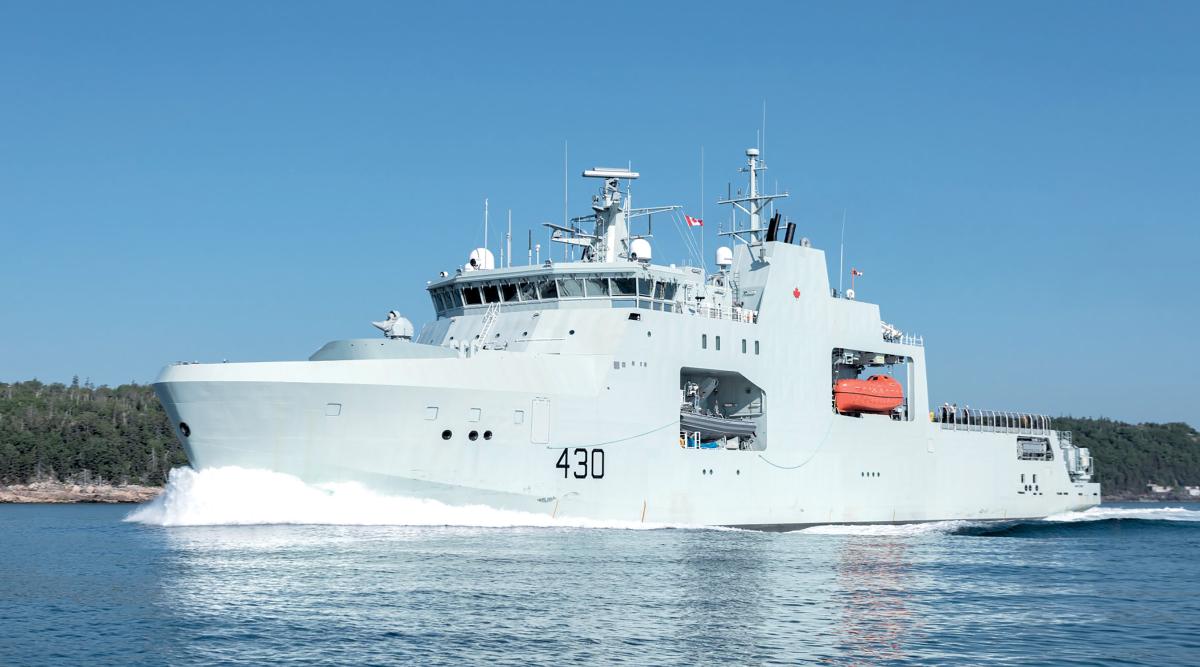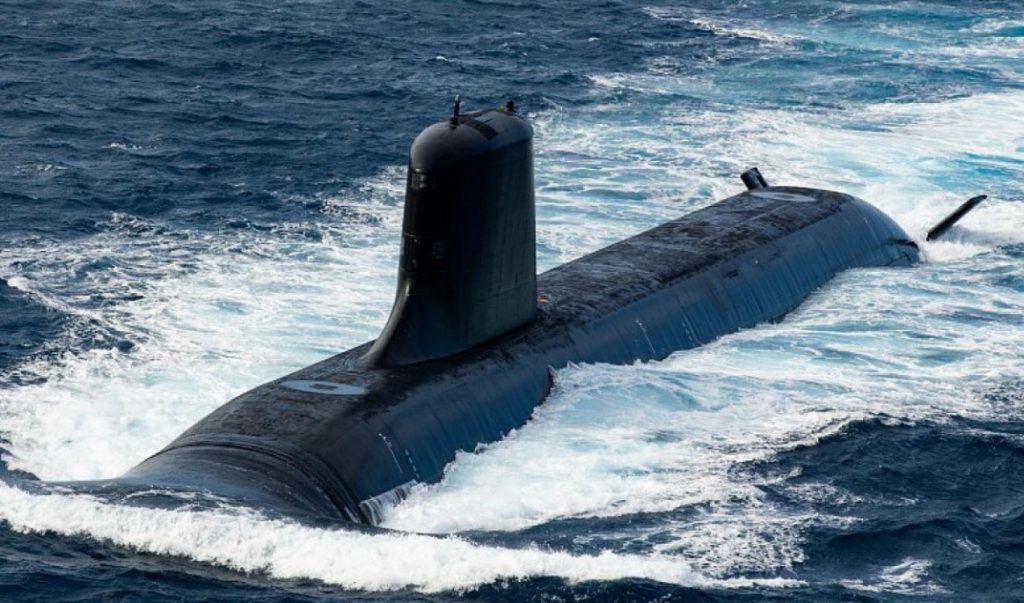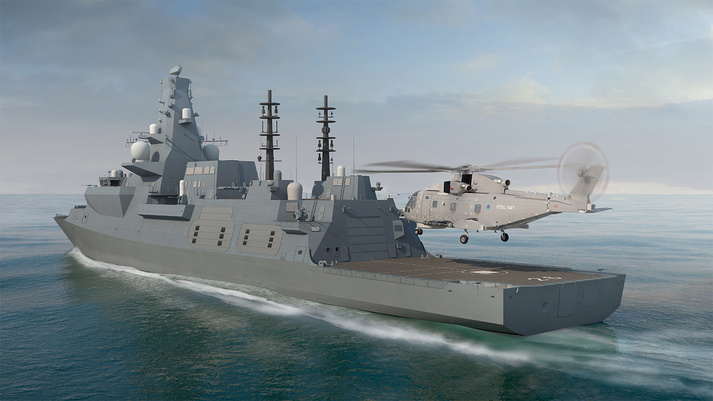The past year brought a multitude of challenges to the decades-old NATO alliance, chief among them the COVID-19 pandemic, which wreaked havoc on personnel, exercises, supply lines, deployments, and shipyard schedules. But NATO’s maritime forces remain among the world’s most adaptable, and they continue to provide fresh solutions and flexible presence for an unstable world.
BELGIUM AND THE NETHERLANDS
Belgium was hit hard in 2020 by the COVID-19 virus, at one point suffering Europe’s highest infection rate. One of its two frigates, the Leopold I, was brought home early from deployment but will be back at sea in 2021. The second, the Louise Marie, is being overhauled during 2021.
Belgium and the Netherlands are coordinating on a frigate replacement effort known as the Anti-Submarine Warfare Frigate. Plans call for the Dutch and Belgian navies each to receive two of the frigates by the early 2030s. The countries also are planning for a dozen new mine countermeasures vessels to be divided equally between them once deliveries commence in 2024.
The Netherlands is working on new air-defense frigates with Germany, and following pandemic-related delays, construction began in December on the Netherlands’ new 7,500-ton combat support ship, to be named the Den Helder. She is being built in Romania for delivery in 2024. The Walrus-class submarine replacement program calls for up to four 3,000-ton long-range boats for delivery beginning in the late 2020s.
BULGARIA
Bulgaria plans to build two multipurpose modular patrol vessels domestically, with deliveries expected in 2025 and 2026. The country received two retired Tripartite-class mine hunters from the Netherlands in 2020.
CANADA
The Harry DeWolf, Canada’s first-in-class Arctic offshore patrol ship, was delivered in July. The 338-foot vessel has been undergoing trials in advance of a 2021 commissioning. Canada plans to buy six for its navy by 2025, plus two modified variants for the Canadian Coast Guard.
Fifteen 7,800-ton future Canadian surface combatants are on the books to replace the current fleet of Iroquois-class destroyers and Halifax-class frigates. The new multimission ships will be fitted with active electronically scanned array radars and a wide variety of weapons, potentially including Tomahawk land-attack missiles. Deliveries are scheduled to run from the mid-2020s through the mid-2040s. Construction began last year on the first of two Canadian 570-foot Protecteur-class joint support ships, which are expected for delivery by 2025.
ESTONIA
Estonia’s Navy received two 59-foot patrol boats late in 2020. The domestically built craft will enter service in 2021.
FRANCE
France’s eighth and final Aquitaine-class frigate, the Lorraine, was launched in November under the Franco-Italian Multi-Mission European Frigate (FREMM) program. The Lorraine, expected for delivery by the end of 2022, is the second unit with enhanced air-defense capabilities. Work has begun on a future 4,500-ton intermediate-size antisubmarine frigate, the Amiral Ronarc’h class. At least five will be built.
Construction began last year on the first of six Overseas Patrol Vessels (OPVs) under the Patrouilleur d’Outre Mer (POM) program for service off New Caledonia, French Polynesia, and Reunion Island. The POM ships should be delivered between 2022 and 2025. Ten Future Ocean Patrol Ships under construction will join the fleet beginning in 2025, while eight 87-ton diving and mine countermeasures support boats are to be delivered by 2025, and four 31,000-ton replenishment ships
by 2030.
Six advanced nuclear-powered attack submarines (SSNs) are planned under the Barracuda program to replace the Rubis/Amethyste class in service. The Suffren, first of the 5,200-ton (submerged) class, was delivered in November. A second is planned for 2022, with four more by 2030.
France also unveiled its intention to build a new 75,000-ton nuclear-powered aircraft carrier to replace the 40,000-ton Charles de Gaulle by 2038. In April, it was revealed that 1,046 of the Charles de Gaulle’s 1,760-person crew had tested positive for COVID-19.
GERMANY
Germany’s second of four Baden-Württemberg-class (F 125) frigates entered service in June. The MKS-180 frigate program, which is intended to replace the Sachsen-class air-defense frigates, has been renamed the F 126 program and is being developed in coordination with the Netherlands. The first of at least four 9,000-ton F 126s is to be operational by 2028. Two 20,000-ton Type 707 replenishment ships are planned for German naval service in the mid-2020s.
Germany ordered 31 Sea Tiger shipboard NH90 NATO Frigate Helicopters to begin replacing Mk 88A Sea Lynxes in 2025.
GREECE
Greece may acquire four Multi-Mission Surface Combatants based on the U.S. Navy’s Freedom-class littoral combat ships, although additional designs are also under consideration.
Greece received a long-delayed sixth Roussen-class missile patrol craft in the summer as part of the Super Vita program. An additional unit remains on order. The country also commissioned the Iraklis, its second 4,500-ton logistics support ship, and took delivery of four 82-foot Mk V special operations craft for use by its Underwater Demolition Command.
ITALY
Italy’s Carlo Bergamini–class (FREMM) frigates will end their ten-ship production run by the mid-2020s. Two large 10,000-ton multimission “DDX” destroyers are under development and could enter service as early as 2028. Seven 108-foot multipurpose offshore patrol ships are on order. Delivery of the first is planned for 2021 and a second was launched in May. Eight new offshore patrol corvettes are planned under the European Patrol Corvette program, with the first expected to join the fleet in 2027. The Italian logistics support ship Vulcano underwent sea trials during 2020 and is to enter service in 2021.
In May, the 27,000-ton aircraft carrier Cavour completed upgrades that will enable her to operate stealthy F-35B strike fighters. Fifteen F-35Bs are eventually planned for the Italian fleet. The new 33,000-ton amphibious assault ship Trieste is to enter service by 2023 and incorporates a flight deck for F-35Bs and helicopters and a well deck for transporting a battalion of troops or facilitating humanitarian assistance operations. Italy hopes to acquire four enhanced versions of the Type 212 air-independent-propulsion (AIP) submarines by the late 2020s.
LITHUANIA
Lithuania purchased its third retired Hunt-class minehunter from the United Kingdom. The former HMS Quorn will be upgraded and renamed prior to joining the Lithuanian fleet in 2023.
ROMANIA
Romania is expanding its coastal defenses with the 100-nautical-mile-range antiship Naval Strike Missile, to be employed from shore-based batteries by 2024.
SPAIN
Spain plans to acquire five 6,100-ton Bonifaz-class multimission frigates under the F-110 program. They will be fitted with Mk 41 vertical launch systems and AN/SPY-7(V)1 Aegis radars. The first F-110 is to be delivered in 2023 and the fifth by 2031. The S-80 submarine program required extensive redesign, but the first unit, Isaac Peral, is now expected for delivery by the end of 2022.
TURKEY
The domestically built big-deck amphibious assault ship Anadolu is being delivered in 2021. The 27,000-ton ship can transport more than 1,000 troops or operate as a light aircraft carrier. At least one additional ship is planned.
The intelligence-collection ship Ufuk conducted sea trials in 2020 and is expected to enter service in 2021, while the replenishment ship Yüzbaşi Güngör Durmuş will join the fleet in the near future as well. The first of four 3,000-ton Istanbul-class frigates was launched in January 2021 for delivery in 2023. Six 214-TN submarines are on order, with the first to enter service in 2022.
UNITED KINGDOM
The United Kingdom plans three warship types to replace its Type 23 frigates in the coming decades, including eight 6,900-ton Type 26 City-class frigates, with delivery of the first, the Glasgow, expected in 2025. In 2021, the first of five smaller, less-expensive Type 31 general-purpose frigates will begin construction, to enter service beginning in 2027. The recently announced Type 32 frigates are still in the early stages of development.
HMS Spey, the final 2,000-ton River-class OPV, entered service in January 2021, and sister HMS Tamar was commissioned in 2020.
Four 17,000-ton Dreadnought-class nuclear-powered ballistic-missile submarines will form the future U.K. nuclear deterrent force, and the namesake of the class is to enter service in the early 2030s. HMS Audacious, the fourth of seven 7,000-ton Astute-class SSNs, was commissioned in April.
Britain’s second 65,000-ton aircraft carrier, HMS Prince of Wales, was commissioned in December 2019 but suffered electrical and engine room flooding in late 2020. Once repairs are completed, she is expected to conduct further training and trials in 2021. (For coverage of HMS Queen Elizabeth, see “Combat Fleets,” January 2021).





